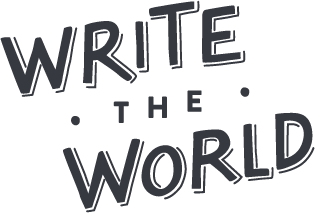We all know that to be a writer, you have to write. But what if you sit down at your keyboard or...
Writer’s block and fear of the blank page are two of the greatest hurdles in writing—especially for students who are asked to pen an original piece under a deadline. And they’re not mutually exclusive. Whether one’s inner editor casts criticisms that stifle creativity or the vast expanse of an open Word Doc leaves one feeling unsure where or how to begin, it can feel helpful to have some tools at the ready to bust through the block, knowing one can always return to a draft to revise and strengthen it.
While much press covers how generative artificial intelligence (AI) technologies can replace the writing process, fewer explore how it can help human writers to get started in the crafting of their own original works. In August, Write the World’s Teen AI Liaison, Cameron Alleyne, shared many insightful suggestions for prompting AI tools to support one’s creative writing. Some additional ideas for helping students use AI to beat writers’ block are below.
Writing Prompts
Perhaps the most obvious use case for generative AI in the context of writer’s block is the creation of writing prompts tailored to the individual writer or the imagined project at hand. Asking tools like ChatGPT to “Generate a list of creative writing prompts for a high school sophomore who is passionate about soccer, video games, and climate advocacy” can lead to student-centered provocations that are individualized to students’ interests, in a fraction of the time it would take teachers to create such a list.
Or, for helping students get started on an assignment, asking the AI to “Create a list of writing prompts to help a high school sophomore start to brainstorm in advance of writing an analytical essay about the theme of ‘innocence to experience’ in The Catcher in the Rye” is another way to help stir students’ thoughts without usurping their authentic writing.
AI-Assisted Outlines
Many students learn best when they have multimodal opportunities to prepare for writing; rather than freewriting in response to generative prompts, writers may find it helpful to create outlines or use graphic organizers, charts, or lists to visualize the content and flow of their piece.
By offerings students choice over how they brainstorm, and, if desired, asking ChatGPT to respond to students Socratically, like a tutor who asks open-ended questions, and to guide them in the creation of an outline or diagram of their work (e.g. analytical essay, short story, or poem), you can allow for multiple modes of engagement, representation, and expression—the three tenets of the Universal Design for Learning framework, which enhances accessibility.
Socratic Tutors
Another way to leverage Socratic questioning is to position AI, again as a writing tutor trained to ask open-ended questions that guide students’ thinking, but this time about the topic of writer’s block itself. After asking the AI to reply in this manner, students can have a conversation as they would with you, or with a peer writer, saying things like: “I’m not sure where to start,” or “I’m afraid my writing isn’t good enough for the assignment,” or “I can’t think of any topics I’m passionate about” to kick off the conversation, according to what lies at the root of their particular hesitance.
Creating A Mood, Scene, Scenario, Character, or Argument
Sometimes, instead of a prompt or a conversation, writers need something more concrete from which to jump into a full-length draft. In the way that poets may borrow a line or title of a poem (citing their sources and obtaining any necessary permissions, of course) to begin their own, original verse, so can AI generate details—such as a mood or theme, scenario or character, argument or excerpt of dialogue—from which writers can carry the narrative forward.
By providing prompts like, “Generate a list of ten settings that evoke conflict,” or “Share 15 unique action verbs,” or “Provide a brief paragraph describing a character whose central motivation is upward mobility,” or “Share ten options for a single line of dialogue that fosters a sense of mystery,” writers can comb through various options, select what they might like to incorporate into their work, and then allow their own ideas to unfurl.
Across all of these suggestions, consider also asking students to write a reflection about their AI use, whether in a footnote, a writer’s statement, or another form of reflective memo. What do they find most helpful, and why? Did these tools and prompts help them tackle their initial blocks? Quell their anxiety? How else can they imagine using AI to assist their creative process?





